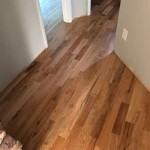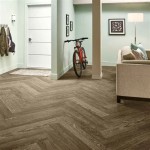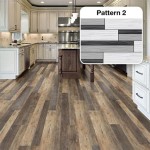How to Install Laminate Flooring on Plywood
Laminate flooring is a popular choice for homeowners due to its durability, affordability, and wide variety of styles. It can be installed over various subfloors, including plywood, which is a common material for underlayment in many homes. Installing laminate flooring on plywood is a relatively straightforward process that can be completed by most DIY enthusiasts with the right tools and preparation.
Preparing the Plywood Subfloor
Before installing laminate flooring, the plywood subfloor must be properly prepared to ensure a smooth and level surface. This will prevent the laminate planks from rocking or unevenly settling, which can lead to premature wear and tear. Here’s how to prepare the plywood subfloor:
-
Check for Moisture:
Plywood is susceptible to moisture damage, so it's essential to check for any signs of dampness or water damage. If any signs of moisture are present, address the issue before proceeding with the flooring installation. -
Assess Levelness:
Use a level to check the flatness of the plywood subfloor. Ideally, the surface should not have variations exceeding 1/8-inch over a 10-foot span. If the subfloor is uneven, consider using a leveling compound or shims to correct the imperfections. -
Clean the Surface:
Thoroughly clean the plywood surface to remove dirt, debris, and any loose particles. You can use a vacuum cleaner or a broom to achieve this. -
Inspect for Squeaks:
If the plywood subfloor is making squeaking noises, you may need to secure loose boards using screws or nails. To prevent squeaking, apply construction adhesive along the seams of the plywood boards before securing them.
Installing the Underlayment
Underlayment acts as a moisture barrier and provides cushioning for the laminate flooring, ensuring a more comfortable walking experience. It also helps to absorb sound and reduce impact noise. There are different types of underlayment available, including foam, cork, and felt.
-
Choose the Right Underlayment:
Select an underlayment that is compatible with laminate flooring and meets the manufacturer's specifications. Consider the thickness and density of the underlayment based on the desired level of cushioning and sound absorption. -
Roll Out the Underlayment:
Unroll the underlayment across the entire floor area, making sure it extends beyond the perimeter of the flooring by at least a few inches. Ensure the seams of the underlayment overlap by at least 6 inches to create a continuous barrier. -
Secure the Underlayment:
Use staples or tack strips to secure the underlayment to the plywood subfloor. Make sure the underlayment is tightly attached to prevent movement, which can lead to flooring instability.
Installing the Laminate Flooring
Once the subfloor and underlayment are properly prepared, you can proceed with installing the laminate flooring. Laminate flooring is typically installed using a click-and-lock system, which allows the planks to be joined together without the need for glue or nails.
-
Start in a Corner:
Begin the installation process in a corner of the room. Place the first plank against the wall, leaving a gap of about 1/4-inch between the flooring and the wall. This space will allow for expansion and contraction of the flooring due to changes in temperature and humidity. -
Join the Planks:
Use a tapping block and a rubber mallet to gently tap the planks together, ensuring they are securely locked into place. The clicking sound will indicate that the planks are properly joined. -
Continue Laying Rows:
Continue laying rows of flooring, working your way across the room. Make sure each row is tightly connected to the previous row, ensuring the planks are aligned and flush. -
Cut Planks as Needed:
You may need to cut planks to fit around doorways, corners, or other obstacles. Use a utility knife or a circular saw to cut the planks to the desired size. -
Install Transition Strips:
Use transition strips to connect the laminate flooring to other flooring materials, such as tile or carpet. These strips will help to create a smooth and seamless transition between the different flooring surfaces. -
Install Baseboards:
Finally, install the baseboards around the perimeter of the room to cover the expansion gap and to enhance the overall aesthetic of the flooring installation.
Installing laminate flooring over plywood is a relatively straightforward process that can be completed in a weekend. With proper preparation, attention to detail, and the right tools, you can achieve a professional-looking finish that will enhance the beauty and value of your home.

How To Install Laminate Flooring Forbes Home

How To Lay Laminate Flooring Cost In Fantastic Handyman

Installing Laminate Flooring For The First Time Crafted Work

Laminate Floor Installation Tips Installing Flooring Vinyl Plank

How To Install Lock Engineered Hardwood Flooring

How To Install A Laminate Floor Lv Hardwood Flooring Toronto

How To Install Laminate Flooring For A Kitchen Mgm Timber

Laminate Floor Installation For Beginners 9 Clever Tips

8 Essential Tools For Laminate Flooring Installations The Family Handyman

Plywood Flooring How To Install Floors Alternative Hardwood Part 1
See Also







